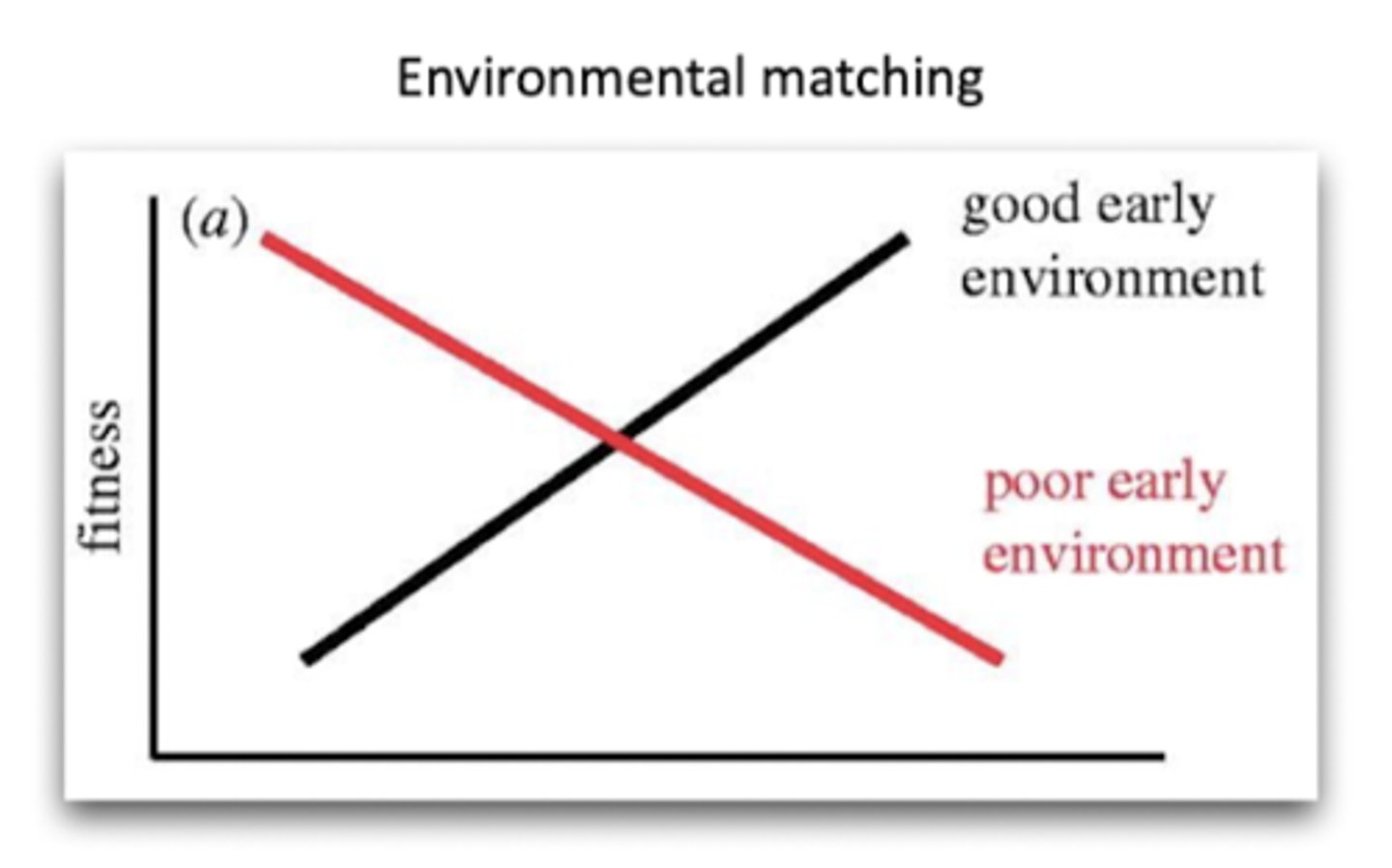HC7: Life History Theory
1/30
There's no tags or description
Looks like no tags are added yet.
Name | Mastery | Learn | Test | Matching | Spaced |
|---|
No study sessions yet.
31 Terms
Active learning
Kinderen gaan zelf op zoek naar de informatie die ze nodig hebben
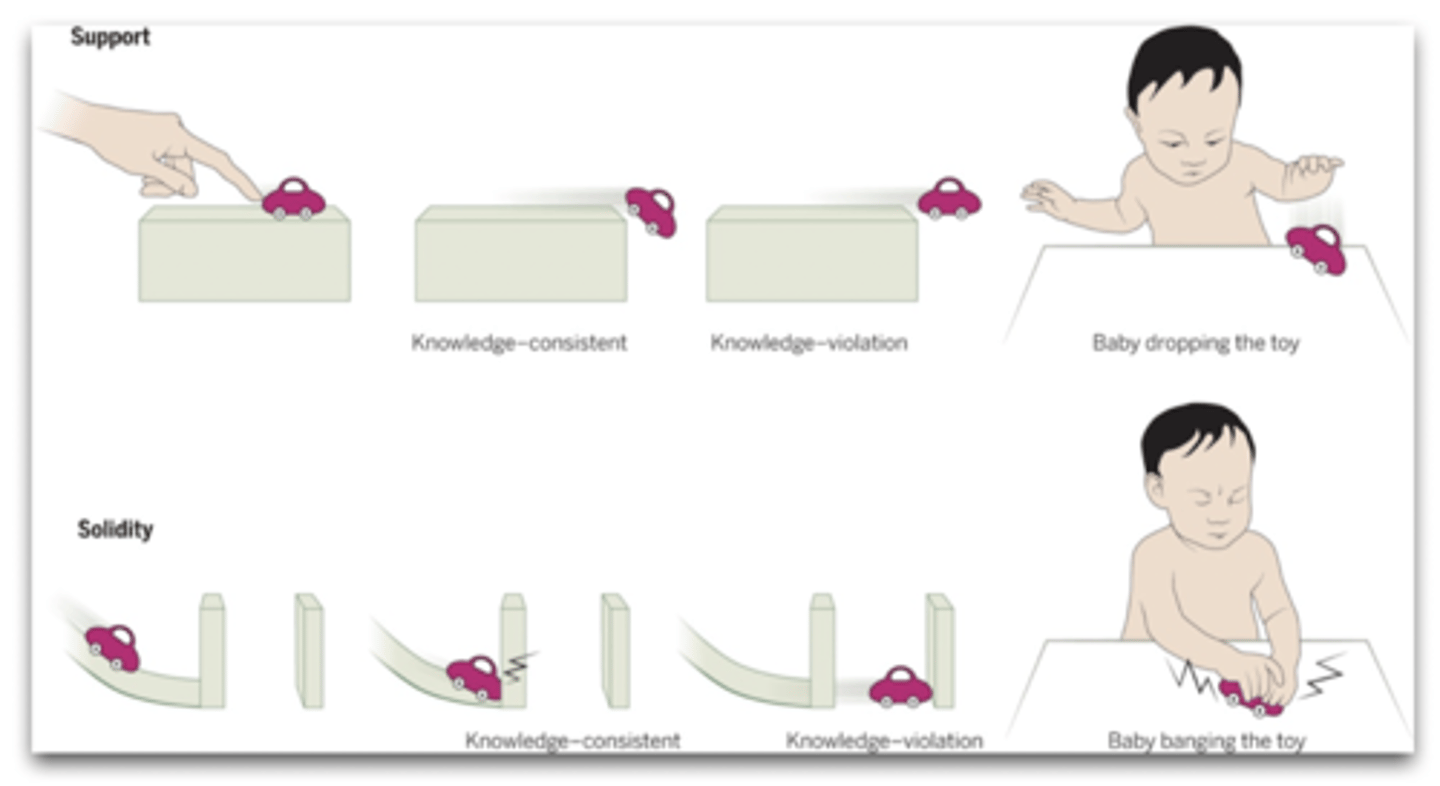
Core knowledge
- Niet actief geleerd
- Constant over development
- Context-independent
- Requires presence of microcircuitry in infant brains
Life history traits
- life history is an organism's schedule of growth, reproduction, and senescence
- Life history traits are related to the timing and occurence of these major life-course event.s
- Some traits pertain to all species, others only to a subset of species
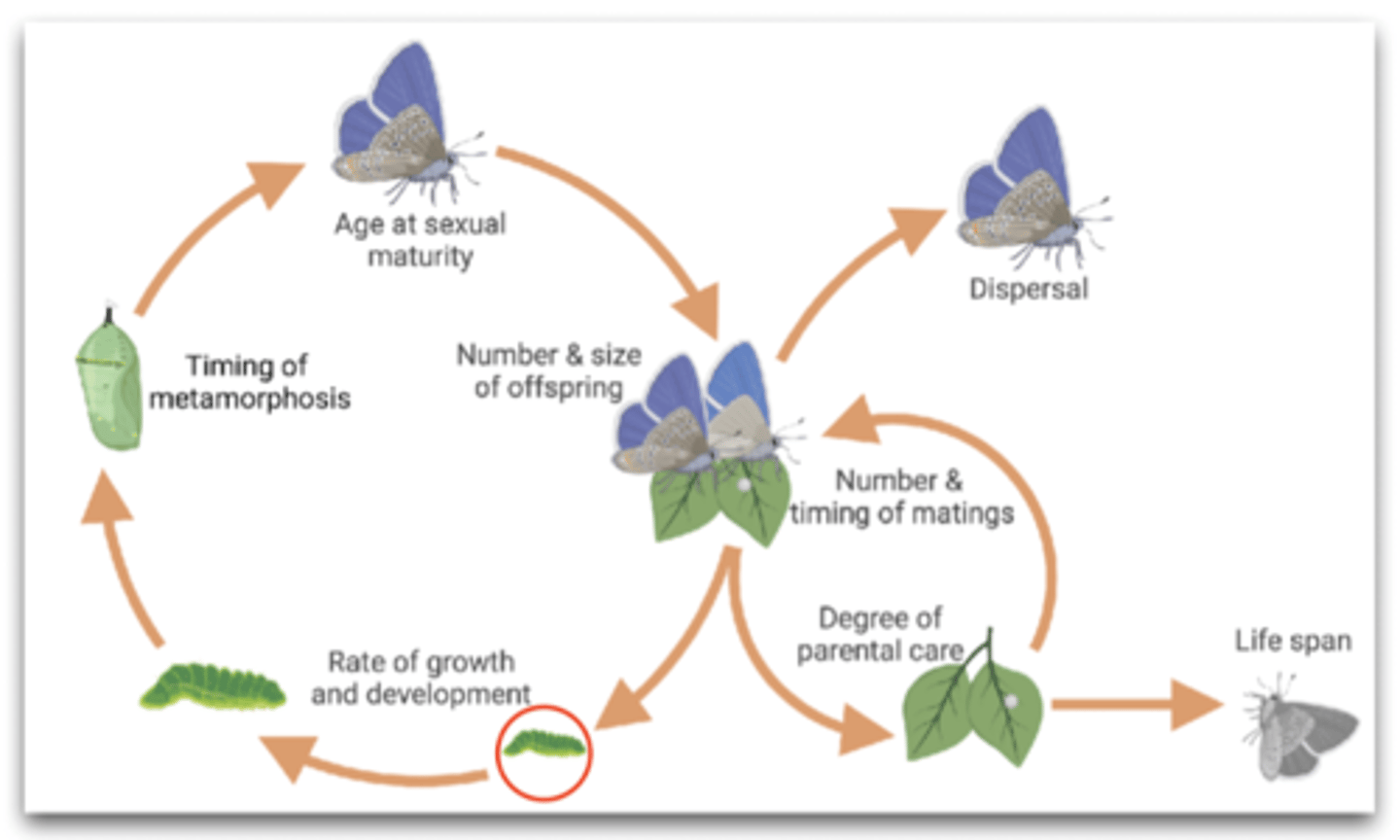
Cruciale aanname van life-history traits
Trade-offs
Trade-offs
Fitness costs paid when a beneficial change in one trait in linked to a detrimental change in another.
- Trade-offs between activities prevent ehir simultaneous maximization & can occur within and across life stages.
Trade-off types
- Resource tradeoffs
- Functional tradeoffs
Functional tradeoffs
Investment in one traits reduces the efficacy of (or need for) another trait, ongeacht hoeveel je investeert in de andere.
bv. helm = veiliger, maar ook langzamer.
Recourse trade off
Investments in one activity limits investment in another.
bv. geld op je bankrekening.
Life history strategy
Specific and coordinated way of allocating time and energy across activities.
- Maximize inclusive fitness in a given ecology
- no conscious deliberation implied
Inclusive fitness =
Directe fitness (zelf reproduceren) + indirecte fitness (verwanten helpen reproduceren, die geen afstammelingen zijn)
K- and r-selected species
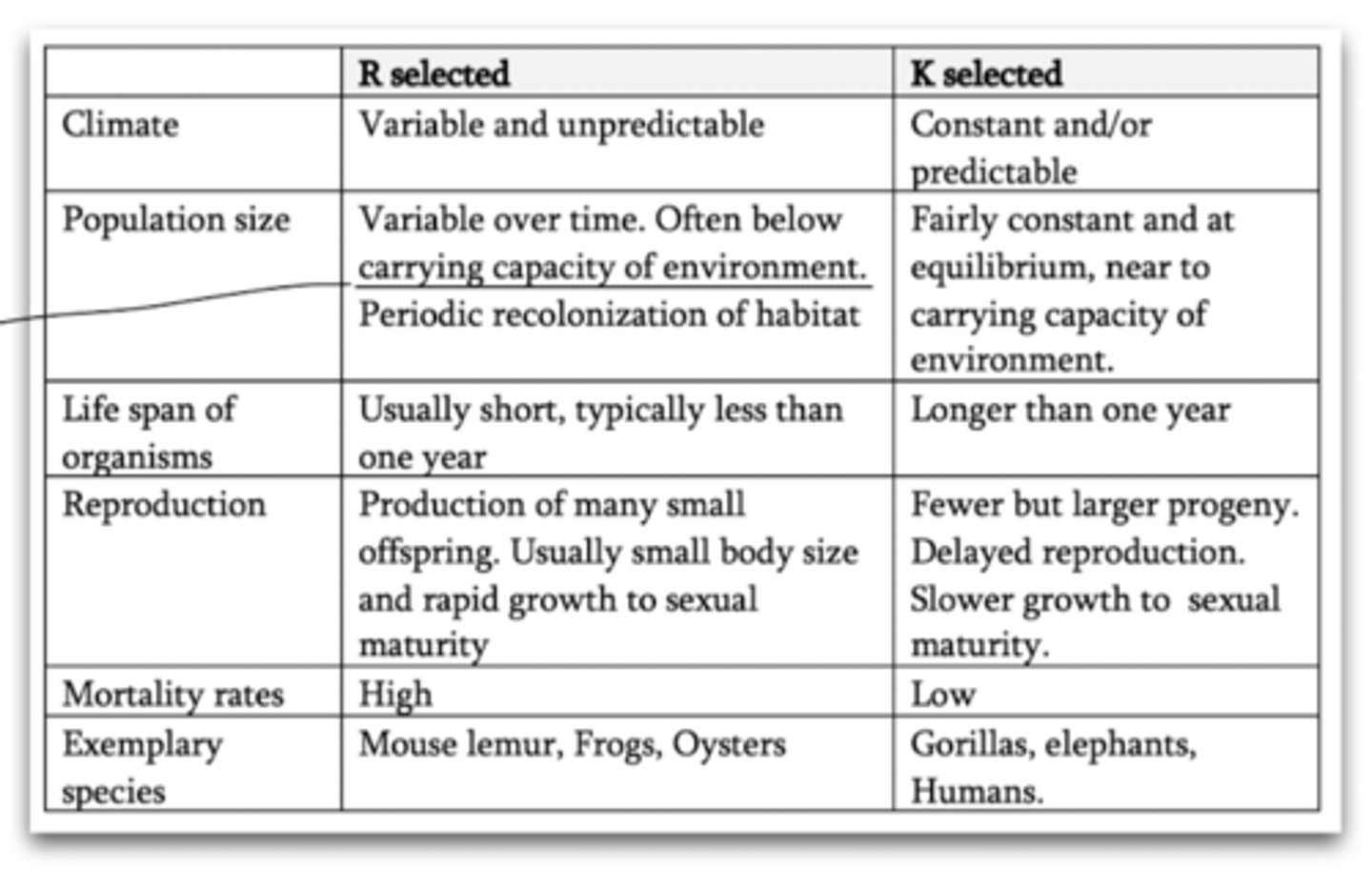
The cognitive niche
- Learning to extract resources requires skill, strength, and detailed knowledge.
- Complexity of foraging tasks may have favoured bigger brains and slower development.
- Learning to hunt takes many years.
Grandmother hypothesis
Grandmothers maximize their inclusive fitness by promoting the reproductive efforts of their children, rather than having additional offspring themselves
r-selected species
have 'faster' life histories and are more likely to evolve in harsh and unpredictable environemnts.
K-selected species
have 'slower' life histories and are more likely to evolve in safe and stable environments.
Phenotypic plasticity
The ability of an organism to change its phenotype in response to environmental conditions.
Belsky evolutionary theory of socialization
- Ouder-kind relatie gegeneraliseerd over de wereld, zorgt voor snellere of langzamere life-history
Stappen Belsky theorie van evolutie van socializatie
1. Harsh environment
2. Minder investering in kind
3. Cue voor kind over bredere omgeving
4. Dus inconsistente parental care
5. Model voor kind
6. Wereld onveilige omgeving
7. Bepaalde attachment style
Tradeoff visible
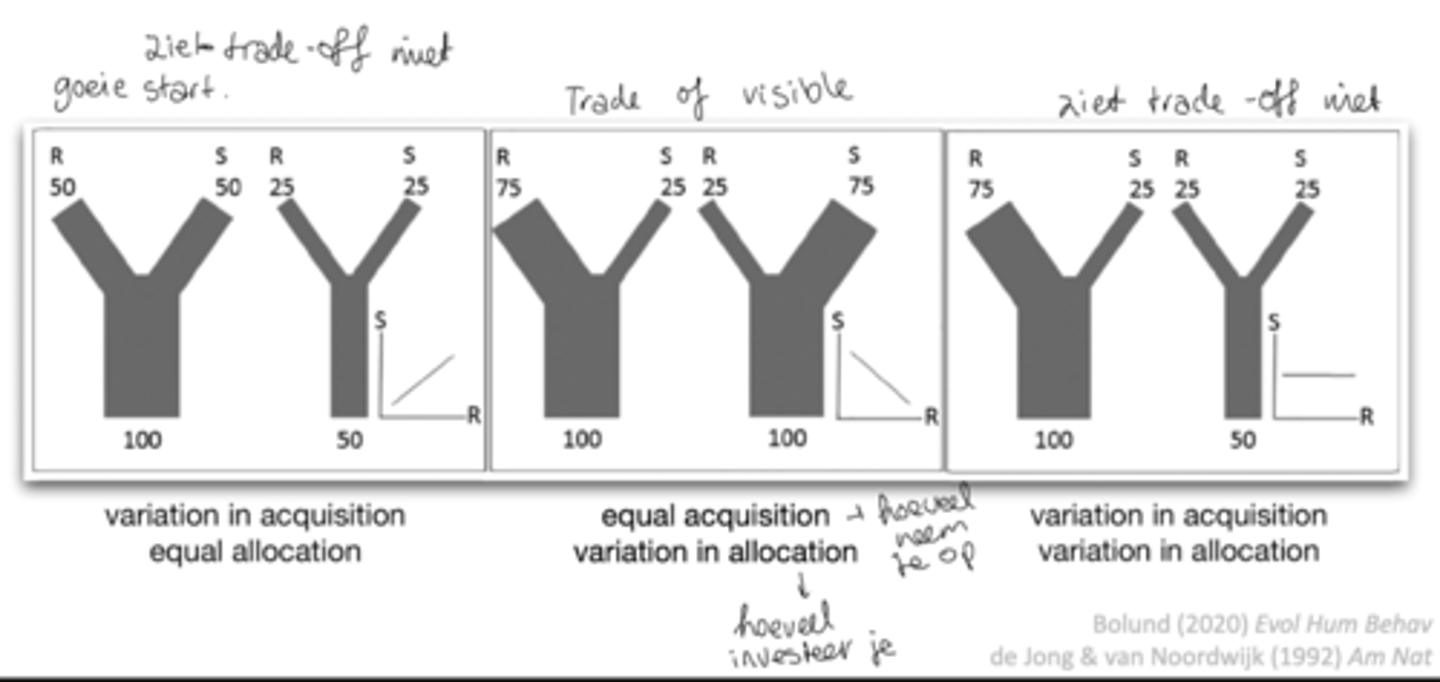
Predictive adaptive responses
- Organisms tailer their currect phenotype to an exprected future state of the world, rather than the current state of the world.
- Organisms estimate the current state of the world based on cues, ie observations more likely to occur in some stated of the world
- Organisms predict future states of the world based on assumed correlations between current and future stated of the world
Weather forecast
Nu fenotype aanpassen aan toekomstige omgeving

Weathering forecast
Slechte start omgeving = lower life expectancy --> ongeacht omgeving

Sensitive periods
Periode waarbij ervaringen mer impact hebben op fenotype.
Critical period
Extreme case of sensitive period. Ervaringen alleen tijdens deze specifieke periode impact.
Physiological mechanisms
- Neural specialisation
- Hormonal changes
- Epigenetic markers
Progressive specialisation
Funcitons exhibit a progressive restriciton of fate by becoming more specific and less plastic
Models of development
- Sample or not, develop a phenotype
- Sequential decision-making process
Sample or not, develop a phenotype
- Instantaneously
- After a time lag
Sequential decision-making process
- Gradually tailor phenotypes
- While updating estimates
Silver spoon
Fitness is highest when the juvenile environment is favourable, irrespective of adult environment
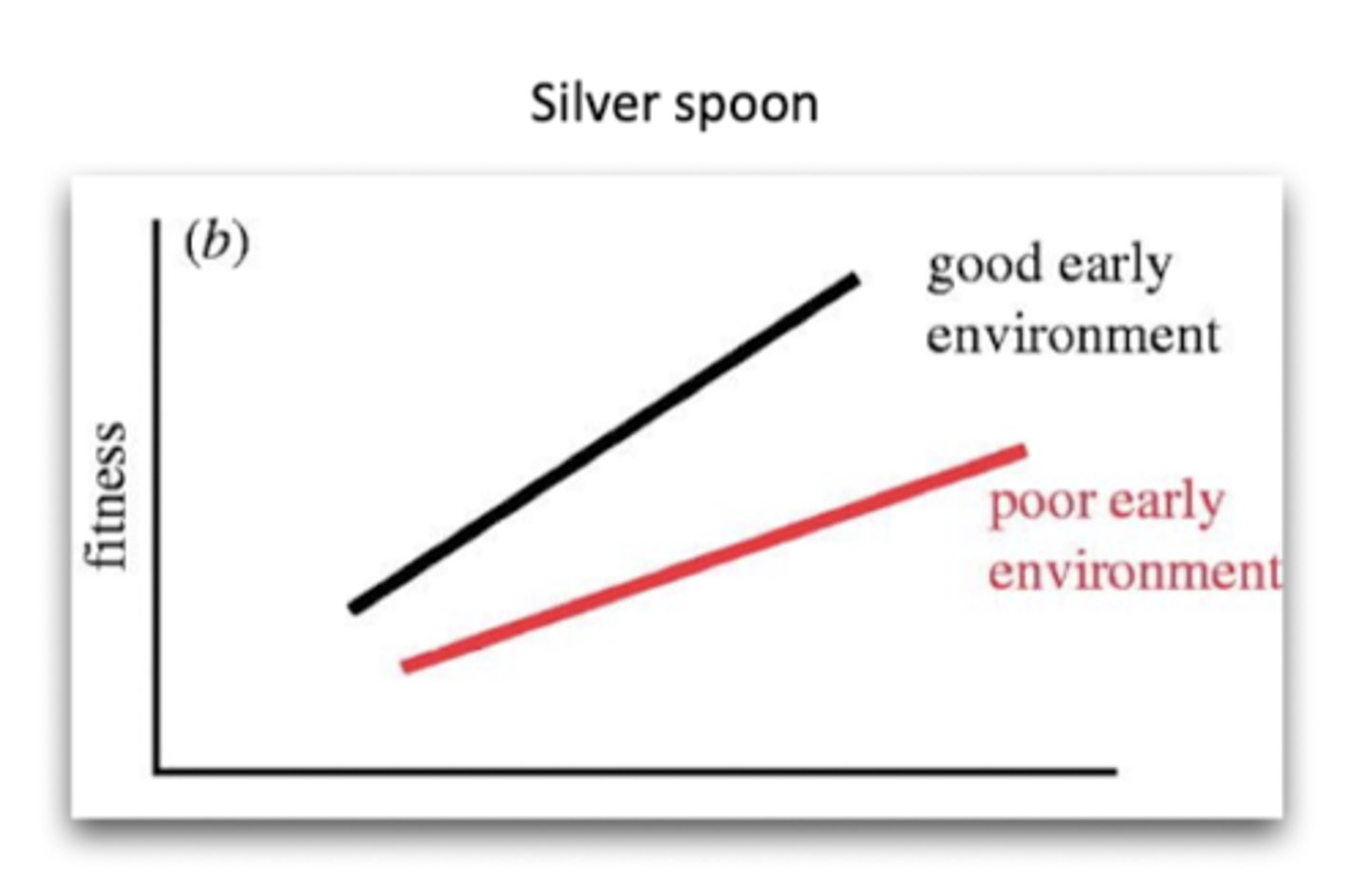
Environmental match
Fitness s the highest when the adult and juvenile environments match
